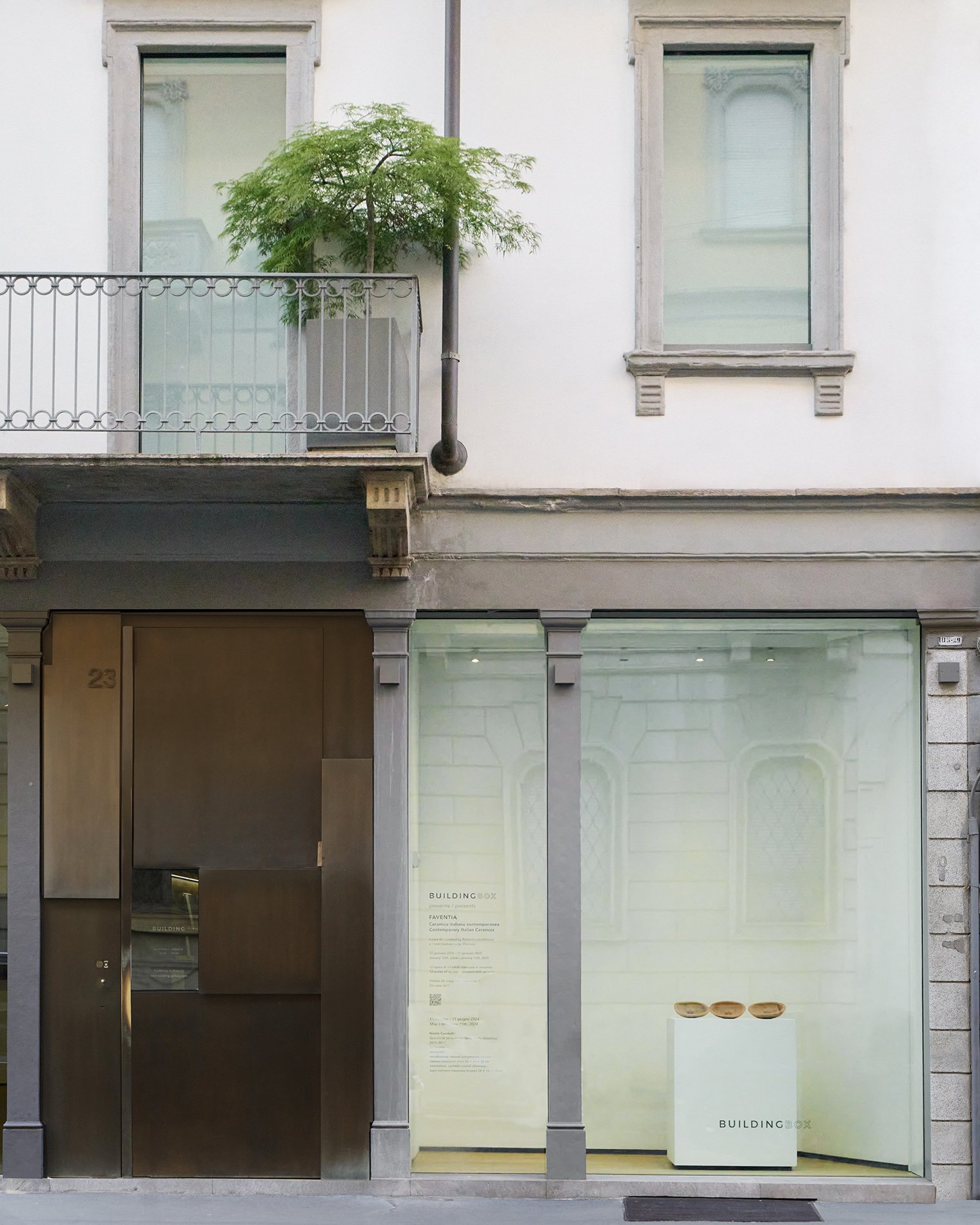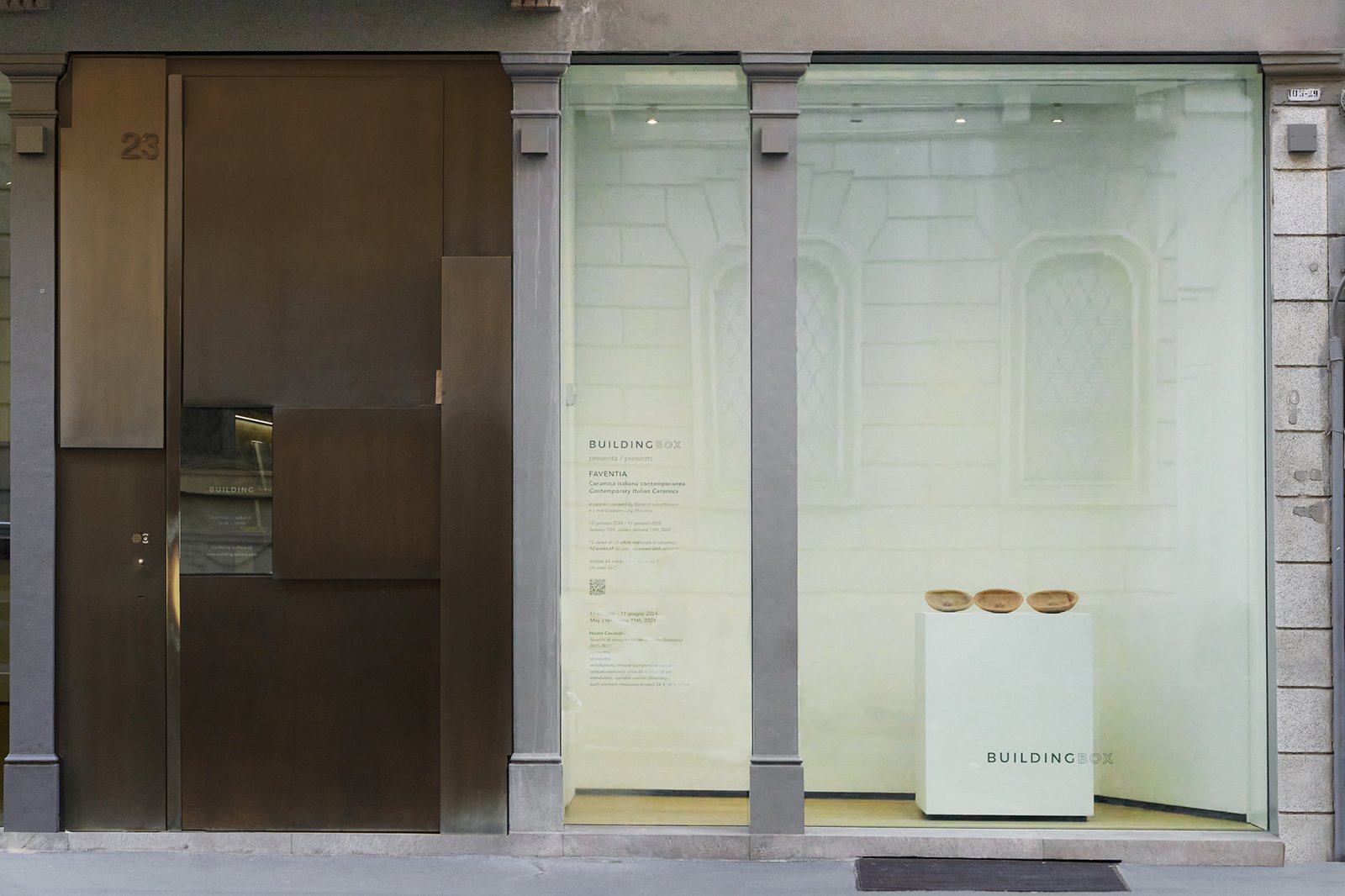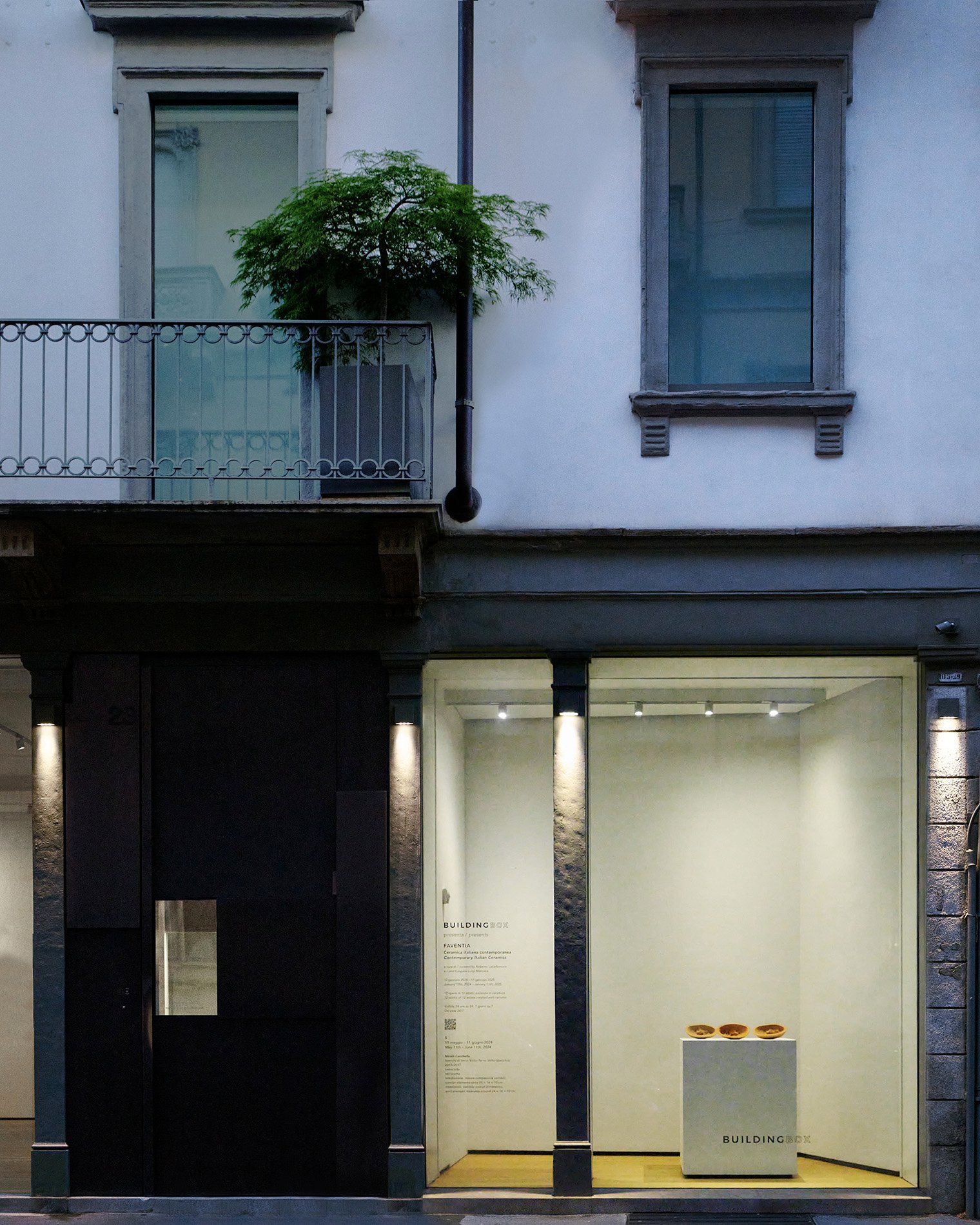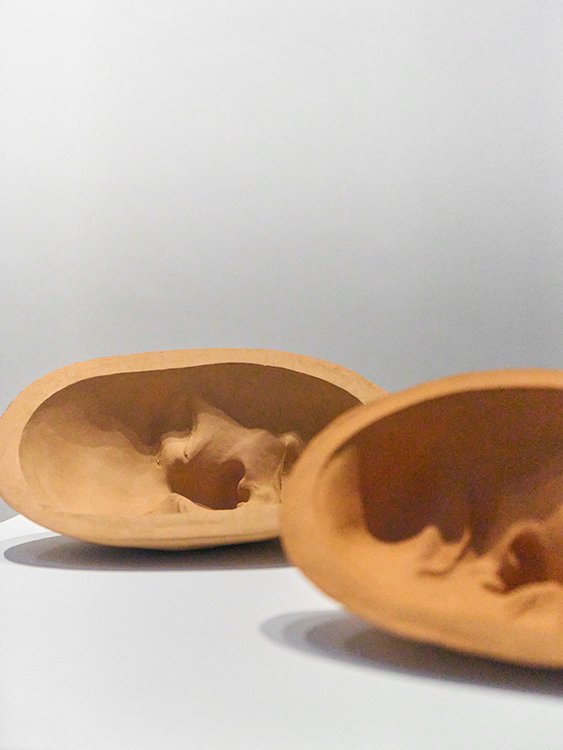FAVENTIA – 5/12. Nicolò Cecchella
11.05.2024 – 11.06.2024
From May 11th, 2024 to June 11th, 2024, BUILDINGBOX hosts the work Specchi di terra (Volto-Terra; Volto-Specchio) (2015-2017) by artist Nicolò Cecchella (Reggio Emilia, 1985).
The fifth artwork featured in the series FAVENTIA. Ceramica italiana contemporanea [Contemporary Italian Ceramics] is the installation Specchi di terra (2015-2017), composed of a group of sculptures based on a clay impression of the artist’s face.
The face is a tangible trace of the inner reality. It is that which, by definition, envelops, covers and defines the epidermic limits of the subject, incorporating their expressive characteristics and identity. The face always contains the end of a body, and the beginning of a relationship with the world. And yet, in Cecchella’s sculpture, the face is never “facing”, it never looks outwards as an interface (the face takes on, if anything, the appearance a uniform, anonymous, and inexpressive surface, to the point that it lies on the floor, towards the ground). In contrast, the face-semblant only reveals itself in the area of contact and pressure between the sculptural material – clay – and the face of a self. Almost as if it were a mask of itself, and for itself, exclusively oriented towards the inner world.Contributing to this are the closed eyes, captured in a mortal pose or in some form of negation and exclusion. A total mask, an opaque mirror of clay, which reflect differently, only for those able to go beyond the trace. To where, as Cecchella has written, “an enigma turns to the present, continually calling it the past”. In these fragments, we reach the source of the archaic substance, to find its root, the cast-impression of its extraction. A single element, among the works exhibited differentiates itself in terms of technique and the plastic and visual result. A “face-mirror” in which, by means of a triple firing, a reflective layer of platinum coats the internal cavity – the simulacrum – of the sculpture. It is here that the inversion of the image takes place: in the blinding light of the metal, the reflections of the surrounding space, of other presences, come together. The face expresses itself, it accommodates, contains and deforms other faces, it turns towards the outside reflecting it, even blindingly, while pursuing its incommunicable and inaccessible mystery. There remains, however, as with every self – or rather “fragment of the self” – an unseen part, one not even visible, a remote geography, impenetrable if not to encounter a mute gaze, incised with closed eyes into the terracotta. The work was realised in collaboration with the Ceramic & Colours workshop of Faenza.
From January 12th, 2024, to January 11th, 2025, BUILDINGBOX presents FAVENTIA. Ceramica italiana contemporanea [Contemporary Italian Ceramics], an exhibition project curated by Roberto Lacarbonara and Gaspare Luigi Marcone, involving twelve Italian artists invited to exhibit sculptures and installations made of ceramics. This programme is dedicated to the centuries-old artistic tradition of the city of Faenza, one of Italy’s main production districts, as well as the seat and epicentre of themed projects and museums such as the “MIC International Ceramics Museum”, the “Premio Faenza”, and the “Museo Carlo Zauli”. Furthermore, the exhibition was conceived as a tribute toward an area affected by the flood of May 2023.
As with BUILDINGBOX’s usual annual schedule, the exhibition hosts monthly interventions. In this edition, the artworks will be presented on the 12th day of each month. This “numerology” alludes to the cyclical nature and synthesis of earthly, spiritual, and temporal elements, as well as the numerous symbologies associated with the number 12 in history and cultures from different parts of the world.
The project maps and summarises some of the main artistic expressions related to the 20th and 21st centuries ceramics, promoting a series of artists from different generations who, consistently or sporadically with respect to their own production, use clay working techniques by continuing, recovering, or revolutionising the extraordinary manual skill of moulding, and the chromatic-luminist value of the glazes.
The ancient Faventia has been a land of artisan production since Roman times, a characteristic that was enhanced in later centuries. Indeed, it became synonymous of the majolica ceramics in many languages – French (faïance), English (faience). In recent years, many artists have used the Faenza kilns – also thanks to residency programmes, exhibitions, workshops, prizes, and publications – for the artistic production of medium and large-scale sculptures, often designed for an environmental development and installation purposes. The primal, demiurgic act of shaping the clay gives ceramics an exclusive status, almost an ontology, the auroral condition of sculpture. In the manipulation’s plastic immediacy that precedes the firing that crystallises the piece, there is all the naturalness of a slow, thoughtful transformation poised between design and chance. In ceramics, as in drawing, there is the seed of an origin, that appears on the surface of the image and things in the precise moment of their conception. Ceramics – beyond the categorisations between craft, art, functional objects, unique, or mass-produced piece – possesses an intermediary (or intermediality) between thought and gesture, sign and sculpture, form and colour, operating, moreover, with various natural elements such as earth, water, and fire; and by hybridising artistic languages, techniques, research, and knowledge between artists and artisans.









